John Glenn: from MiG Killer to Oldest Man in Space
If you had to name the ten most-famous Americans ever, who would be on your list? Better yet: if you could go back in time with any of them and have a beer, who would you pick? John Glenn would have to be at the top of my list. He flew combat missions in World War II and Korea, flew alongside baseball great Ted Williams, was one of the original Mercury astronauts, the first American to orbit the earth, was a politician, ran for president, then became the oldest man in space. Man, wouldn’t you just kill to hear some of those stories?
The following pages feature historic photos of John H. Glenn Jr., some you might have seen, some you haven’t. Hopefully you enjoy reading this slideshow as much as we did writing it.
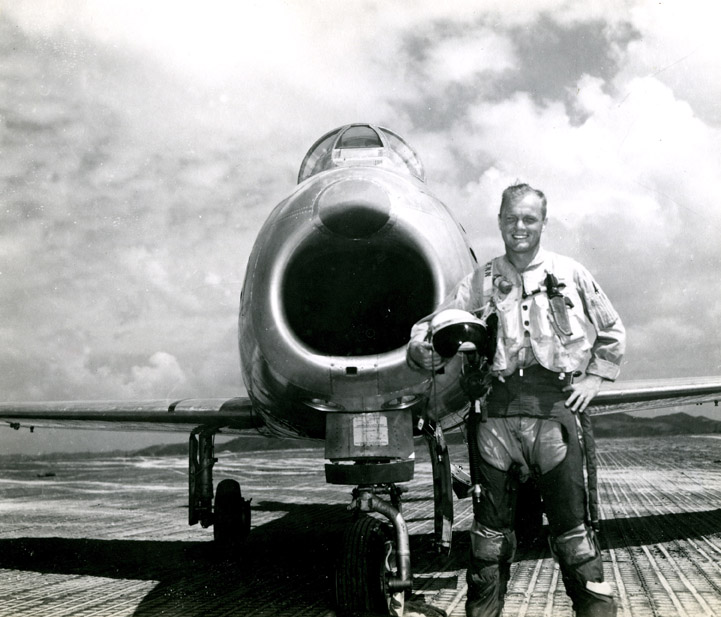
Maj. Glenn’s fighter took so much damage from enemy fire that his fellow aviators nicknamed him “Magnet Ass.” Here he stands in front of the F-86 Sabre which he used to kill three enemy MiG-15s. Between World War II and Korea, Glenn flew 149 combat missions and was hit 12 different times. On two occasions, his plane returned with over 250 holes.
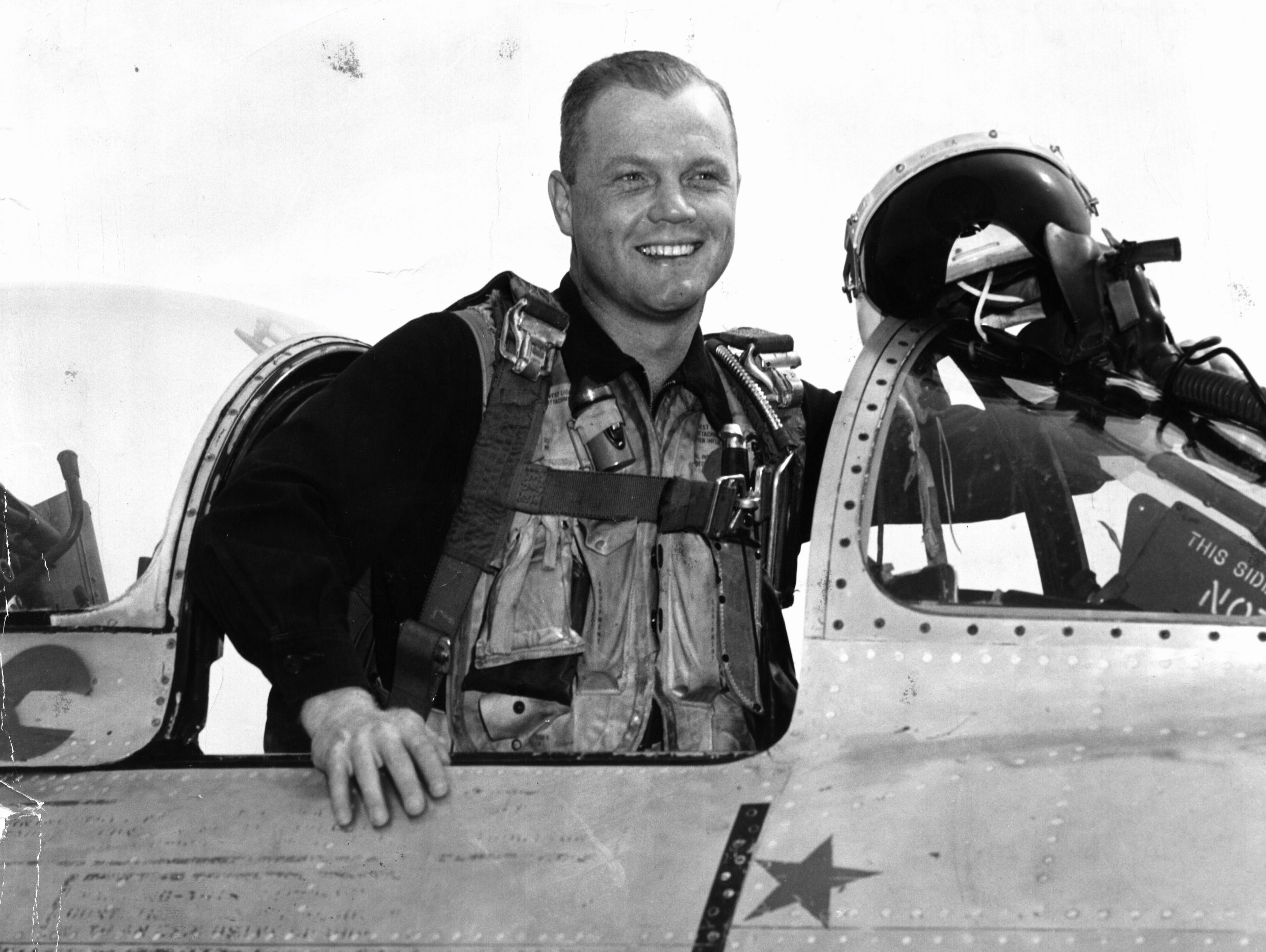
Maj. Glenn after scoring his third — and final — victory of the Korean War on 23 July 1953. The Marine aviator was temporarily assigned to the Air Force’s 25th Fighter Interceptor Squadron, at Suwon (K-13) Air Base in South Korea.
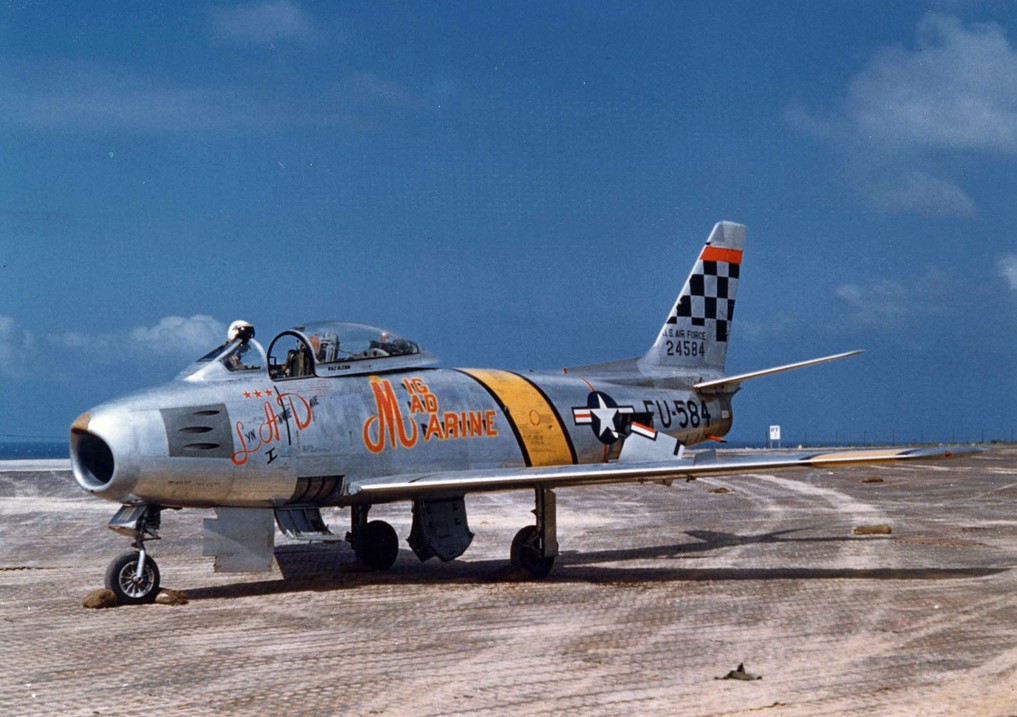
Glenn’s North American Aviation F-86F-30-NA Sabre (serial no. 52-4584) at Suwon, 1953. He had the names of his family (daughter Lyn, wife Annie, and son Dave) painted on the fuselage, but his Air Force comrades painted “MiG Mad Marine” after Glenn complained of a lack of enemy fighters to shoot at. His first two kills were on 12 and 19 July 1953.
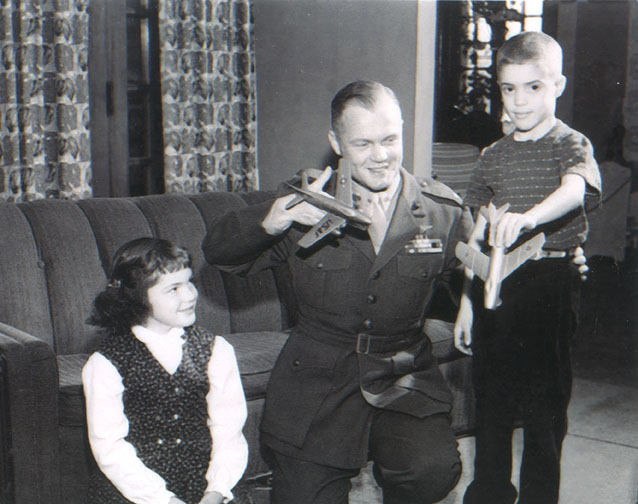
Daughter Lyn soaks in a lesson in aerial combat tactics just moments before Glenn sends son David’s MiG-15 down in flames in 1953. Prior to his temporary combat assignment with the Air Force, Glenn flew F9F Panthers for Marine Attack Squadron 311 (VMA-311).
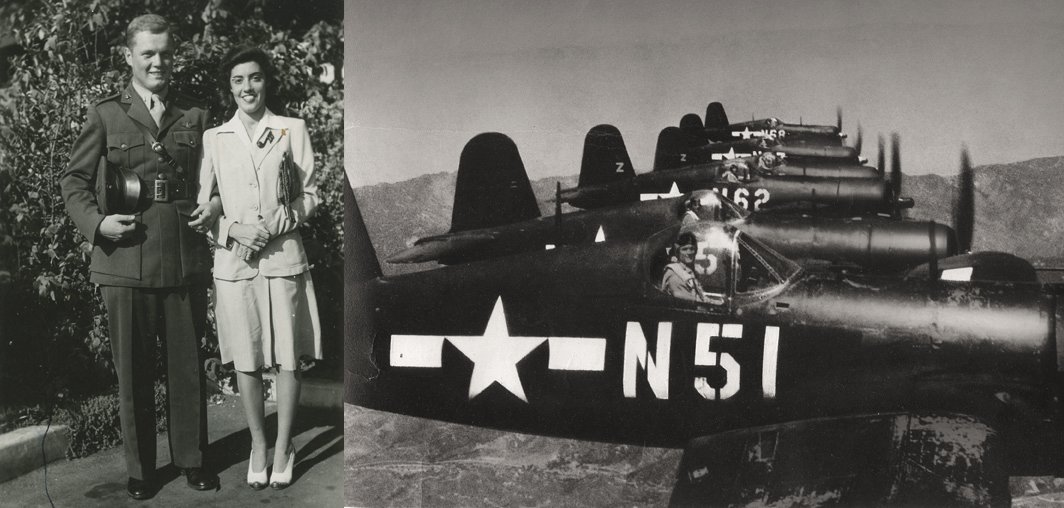
Left: Glenn with wife Annie in 1943. Right: Glenn flying formation with F4U Corsairs of Marine Observation Squadron 155 (VMO-155) circa 1944. Glenn was assigned at Midway and the Marshall Islands during World War II and volunteered to fly patrol missions over China during the post-war occupation.
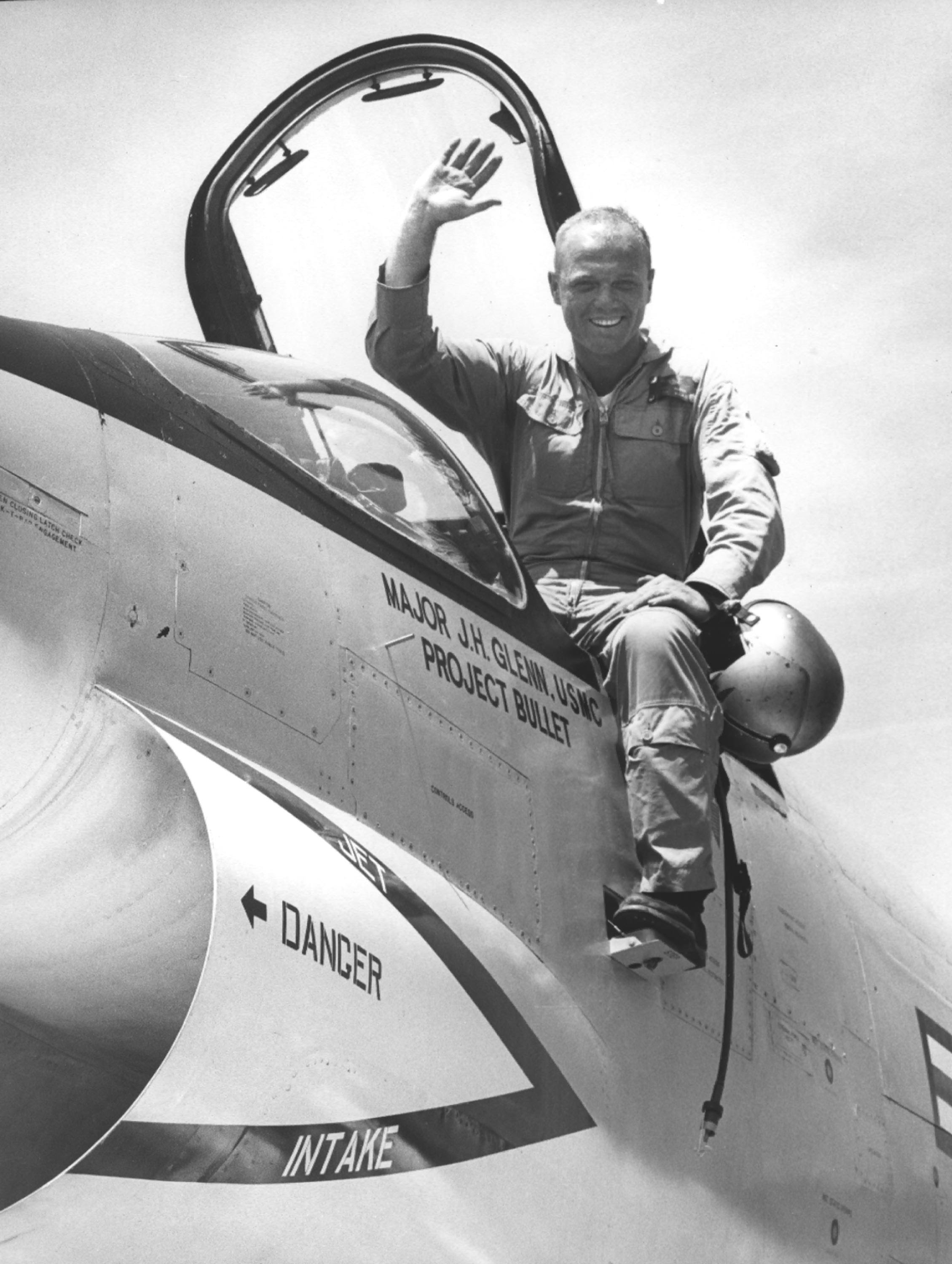
Maj. Glenn straddles his Chance Vought F8U-1P Crusader (Bu. No. 144608) after the first supersonic transcontinental flight on 16 July 1957. Glenn flew 2,360 miles from Naval Air Station Los Alamitos in Southern California to Floyd Bennett Field in Brooklyn, N.Y. in just 3 hours and 23 minutes.
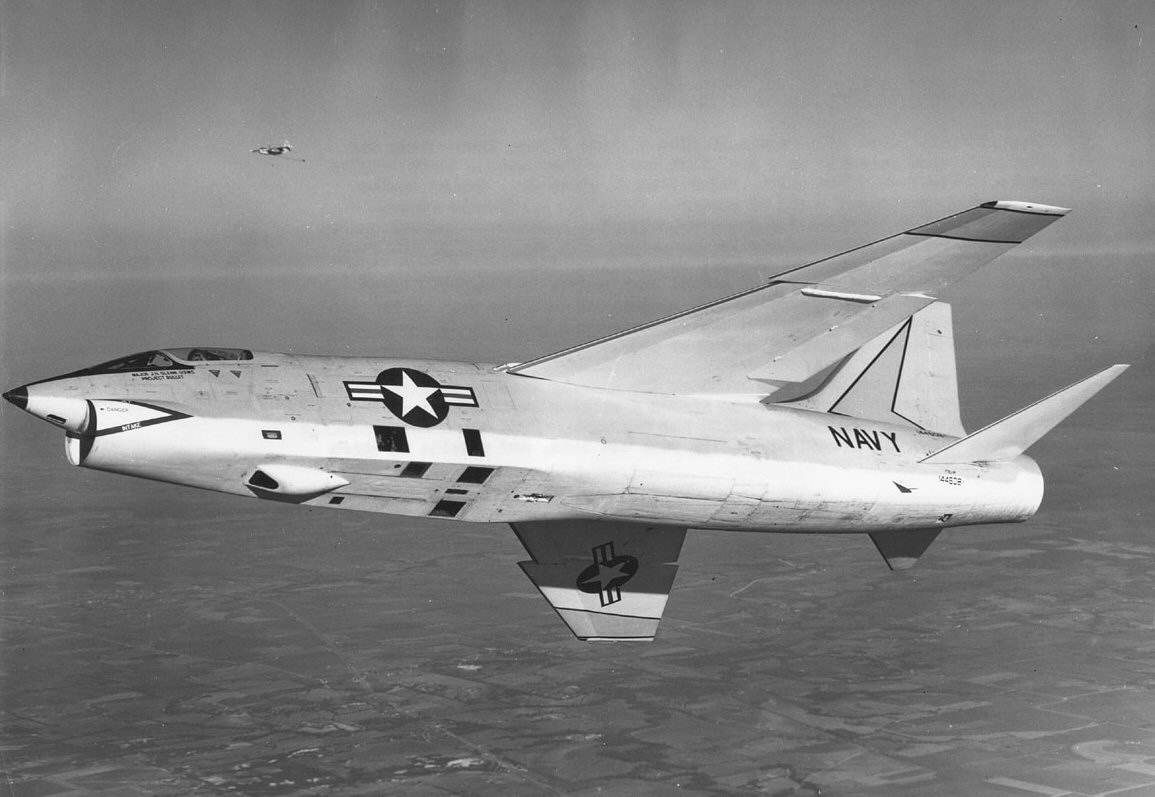
Glenn’s Project BULLET Chance Vought F8U-1P Crusader banks away from the camera. Despite having to slow down for three mid-air refueling contacts with propeller-driven AJ-2 Savage tankers (one is seen here with drogue extended in the background) he averaged 725.55 mph.
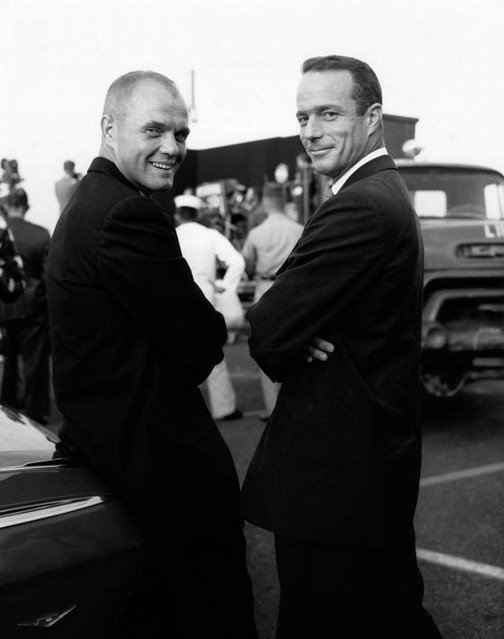
Glenn and Mercury-Atlas 6 (MA-6) backup pilot Scott Carpenter looking sharp in 1961.
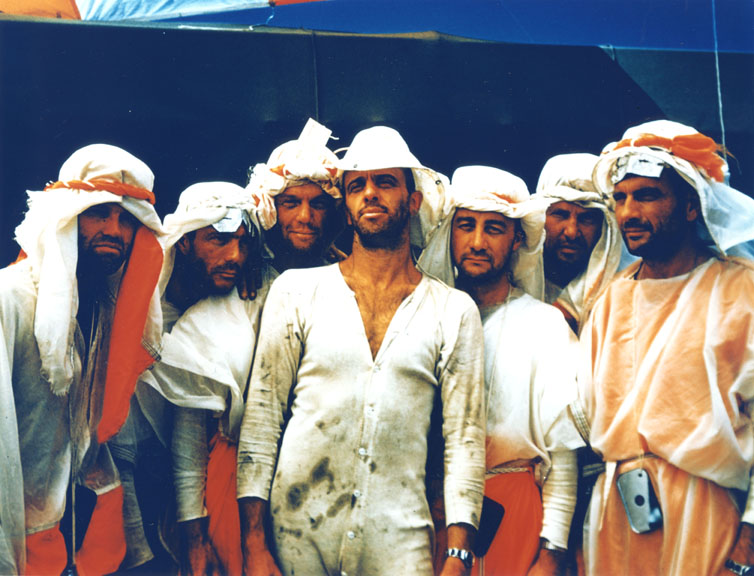
Project Mercury astronauts during desert training at the Air Force Survival School at Stead Air Force Base, Nevada in 1960.
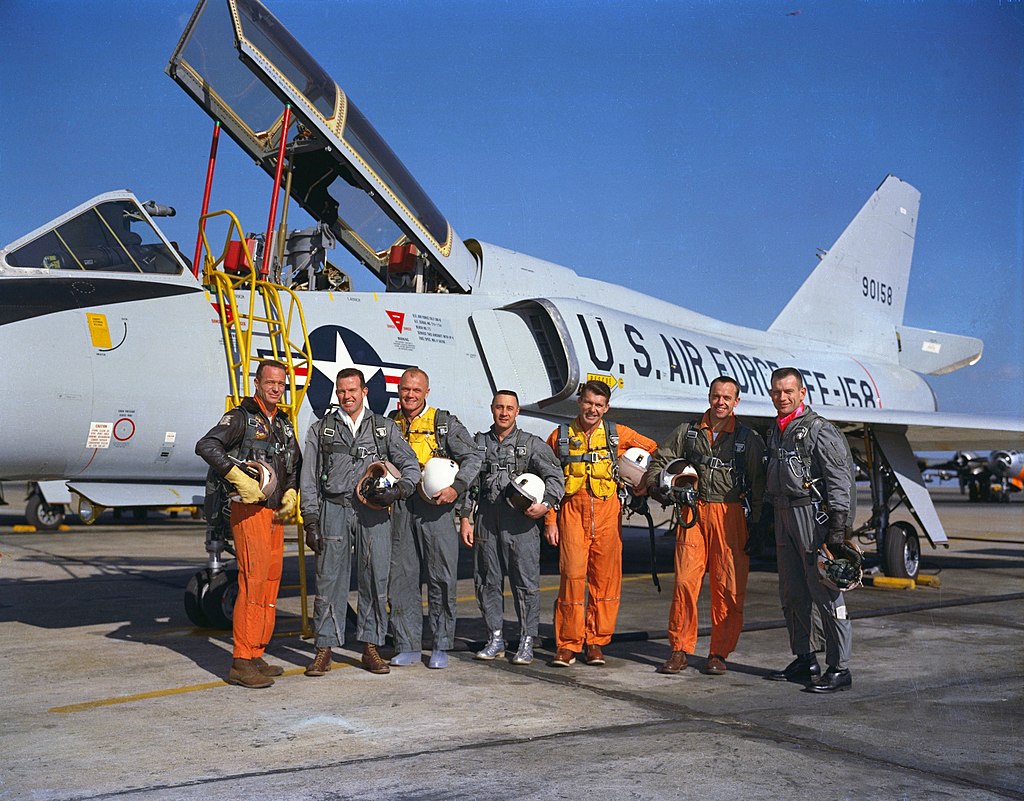
The Mercury Seven astronauts stand in front of a Convair F-106B Delta Dart aircraft at Langley Air Force Base in 1961. From left to right: Scott Carpenter, Gordon Cooper, Glenn, Gus Grissom, Wally Schirra, Alan Shepard, and Deke Slayton.
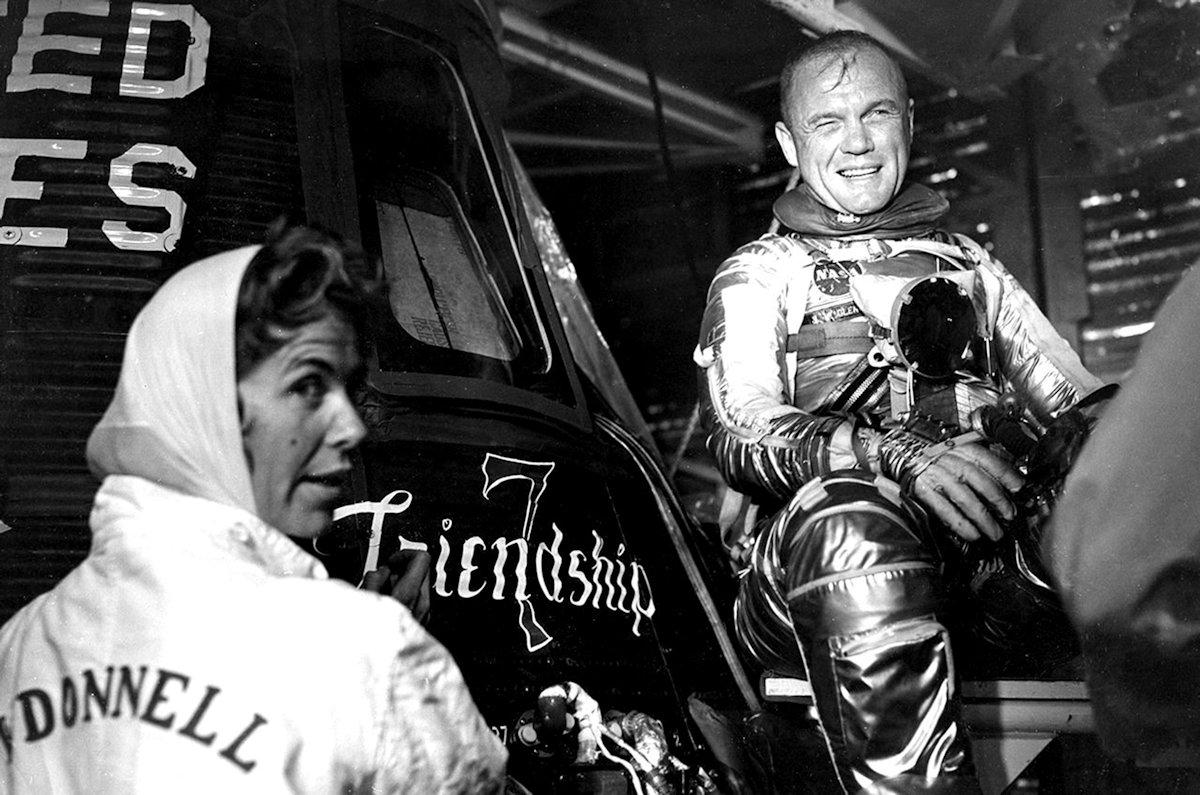
Glenn requested that the artist who created the script for the “Friendship 7” space capsule’s logo be the one to paint it. Here, Cecelia Bibby of Chrysler Aerospace applies finishing touches atop the gantry at Cape Canaveral’s Launch Pad 14. Bibby also painted Scott Carpenter’s Aurora 7 and Wally Schirra’s Sigma 7 capsules.
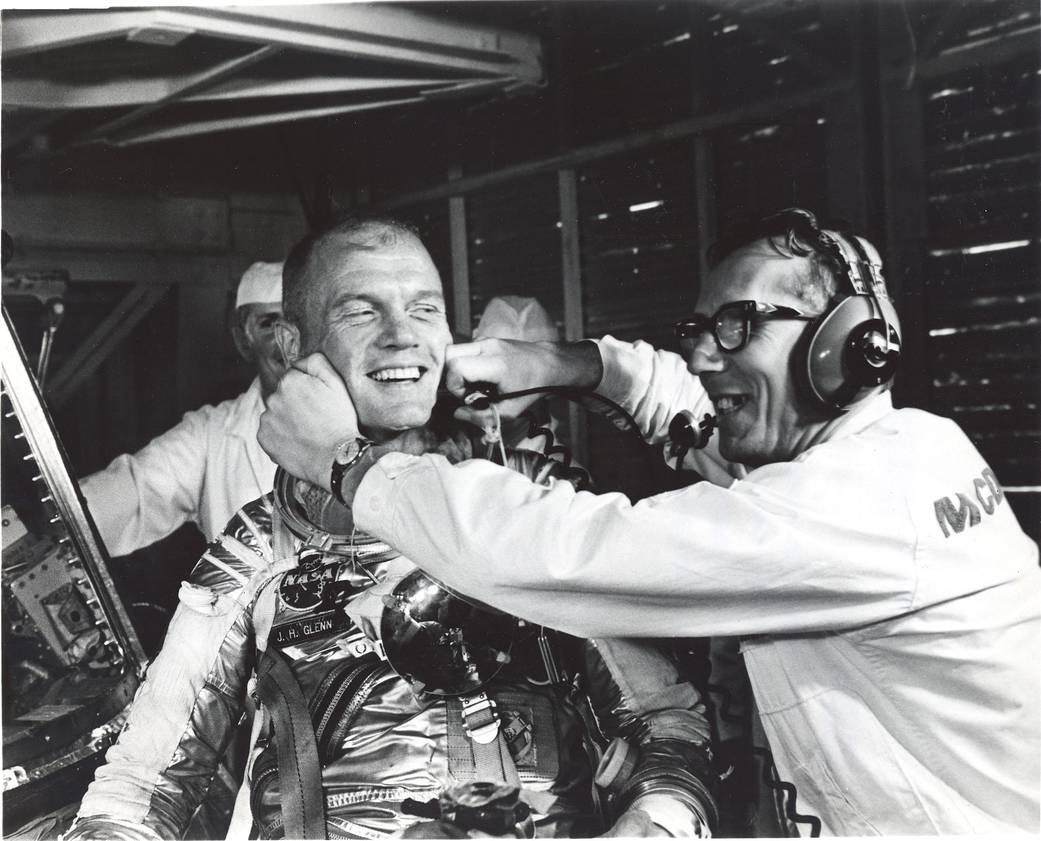
Pad Director Günter Wendt gets Glenn to crack a smile after one of MA-6’s many delays. Wendt, whom Glenn nicknamed “der Führer of der Launch Pad,” was a Luftwaffe engineer during World War II, then emigrated to the United States after the war. He drove trucks until earning his citizenship in 1955 and went to work for McDonnell Aircraft in St. Louis, Mo.. Wendt was in charge of the close-out crew for all manned Mercury, Gemini, and Apollo missions.
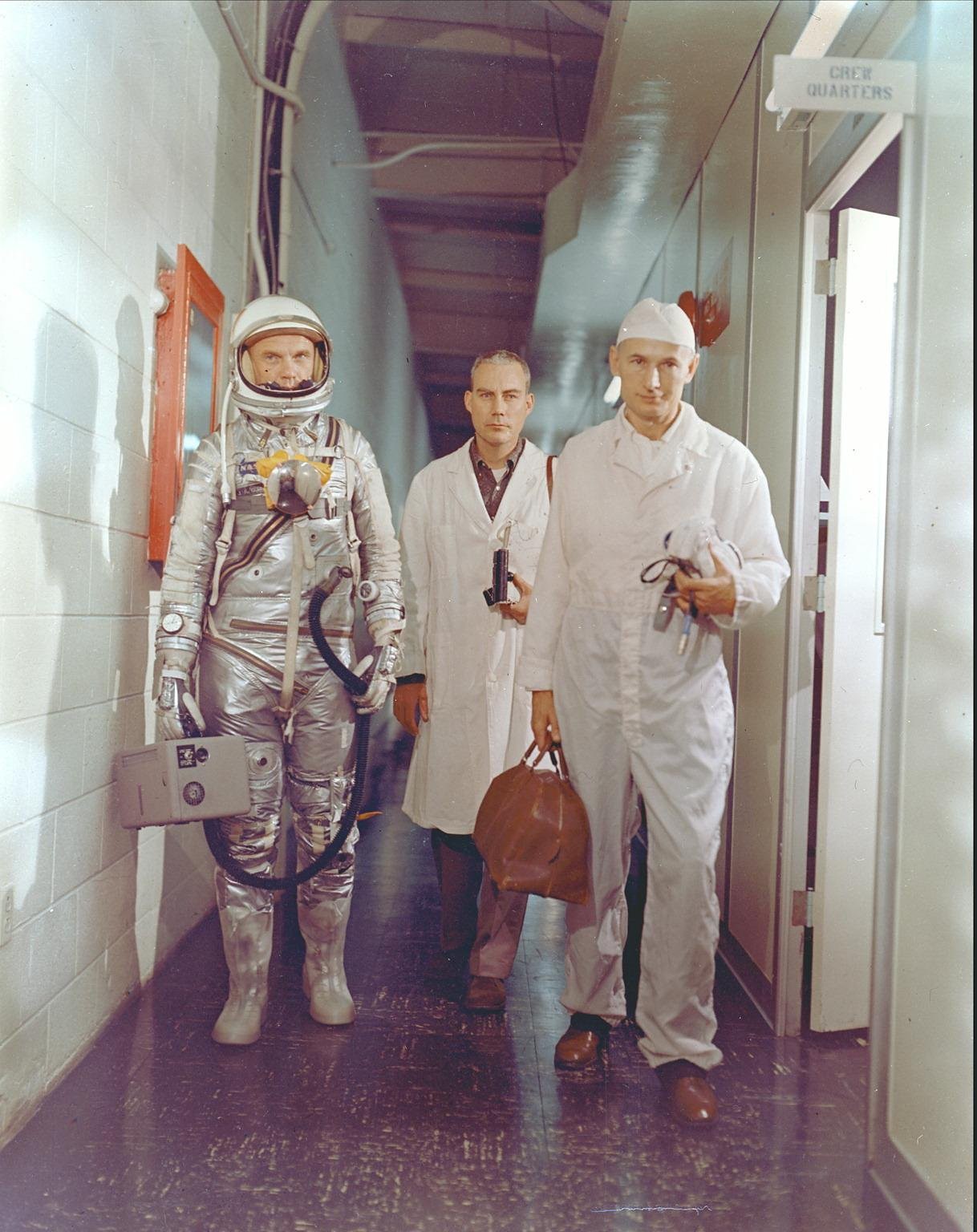
Glenn departing NASA’s crew quarters prior to his historic mission. Here he is wearing a pressure suit and is carrying the portable ventilation unit.
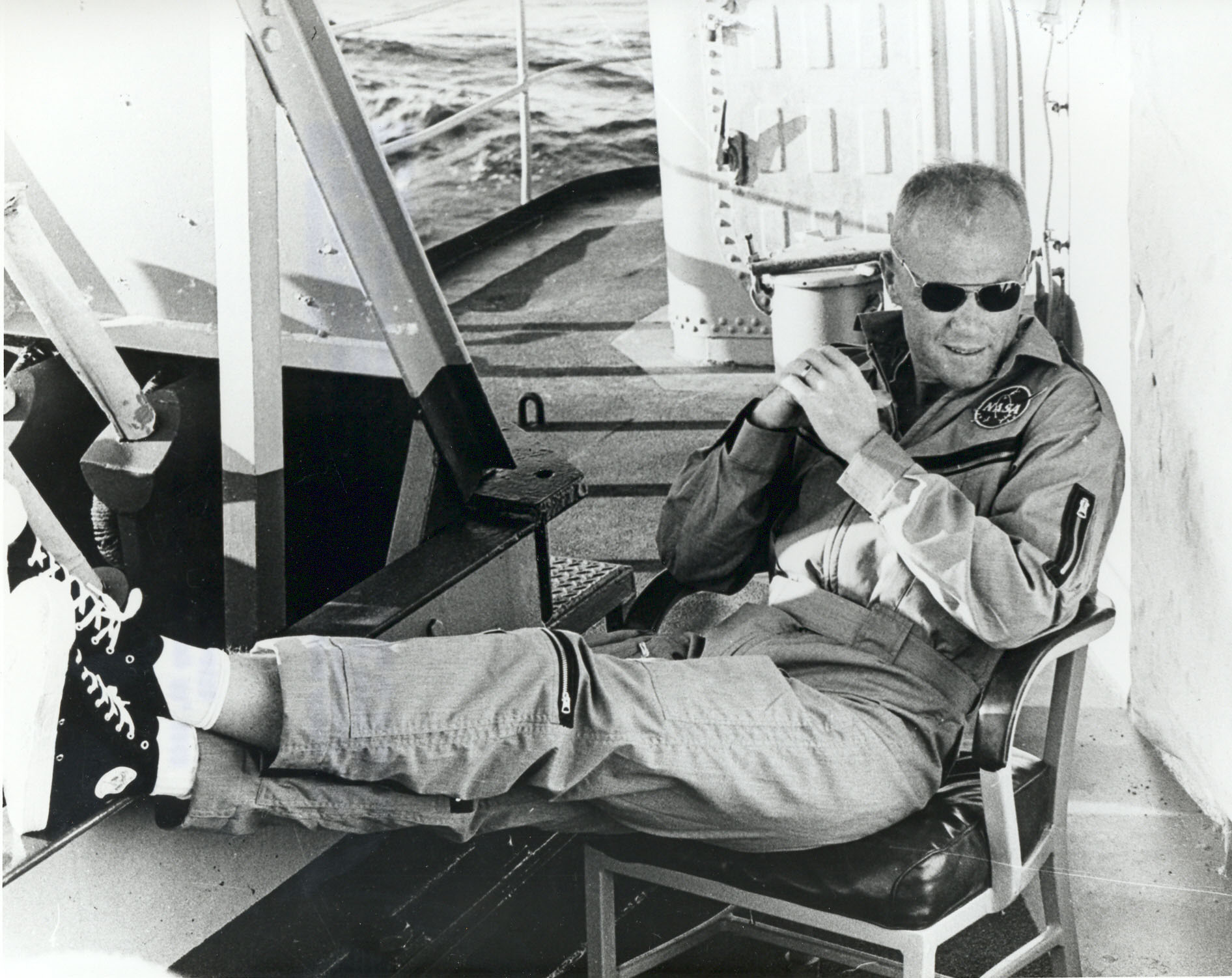
After splashing down near Grand Turk Island in the Caribbean, Glenn was recovered by the destroyer USS Noa (DD-841), before a helicopter transers him to the primary recovery ship — USS Randolph (CV-15).
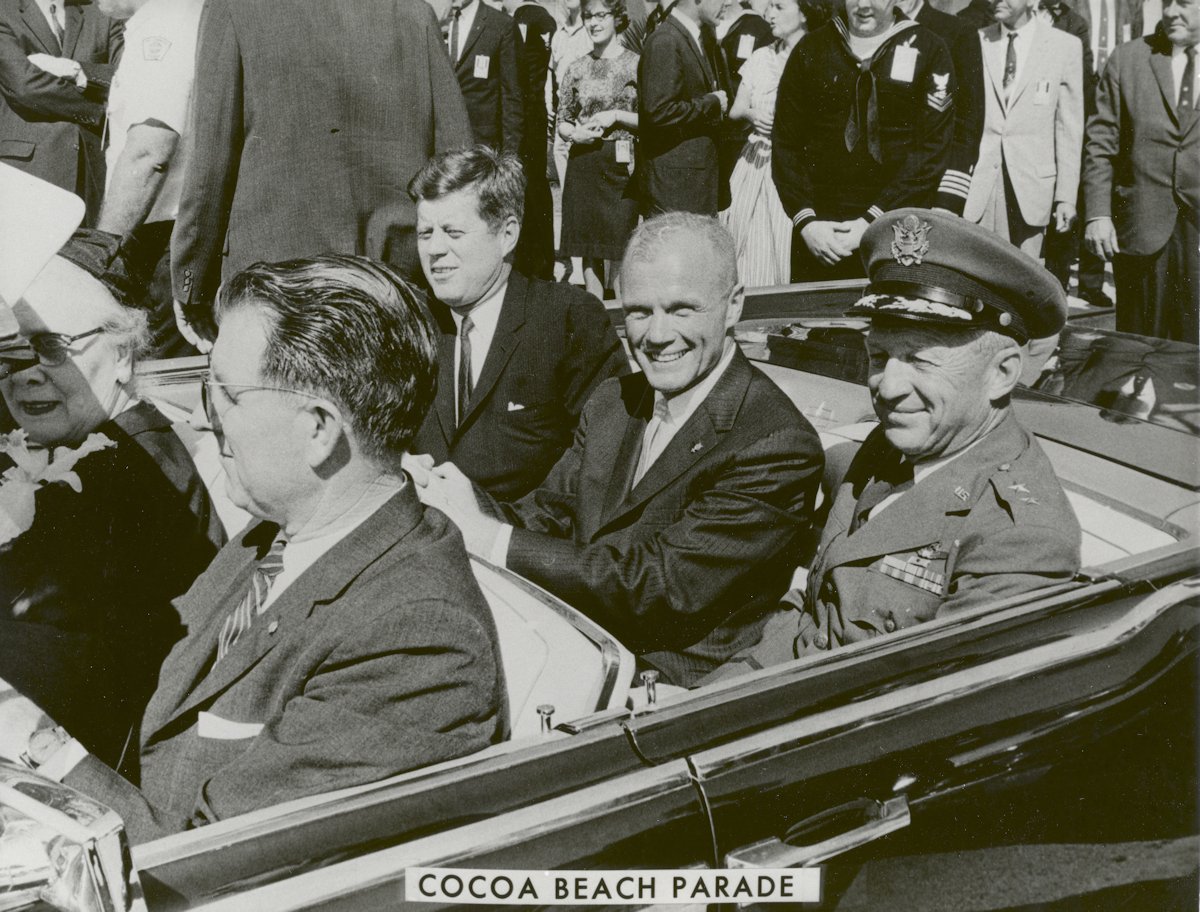
Glenn rides alongside President John F. Kennedy and Maj. Gen. Leighton I. Davis (USAF) during a parade in Cocoa Beach, Fla. after Glenn’s historic spaceflight.
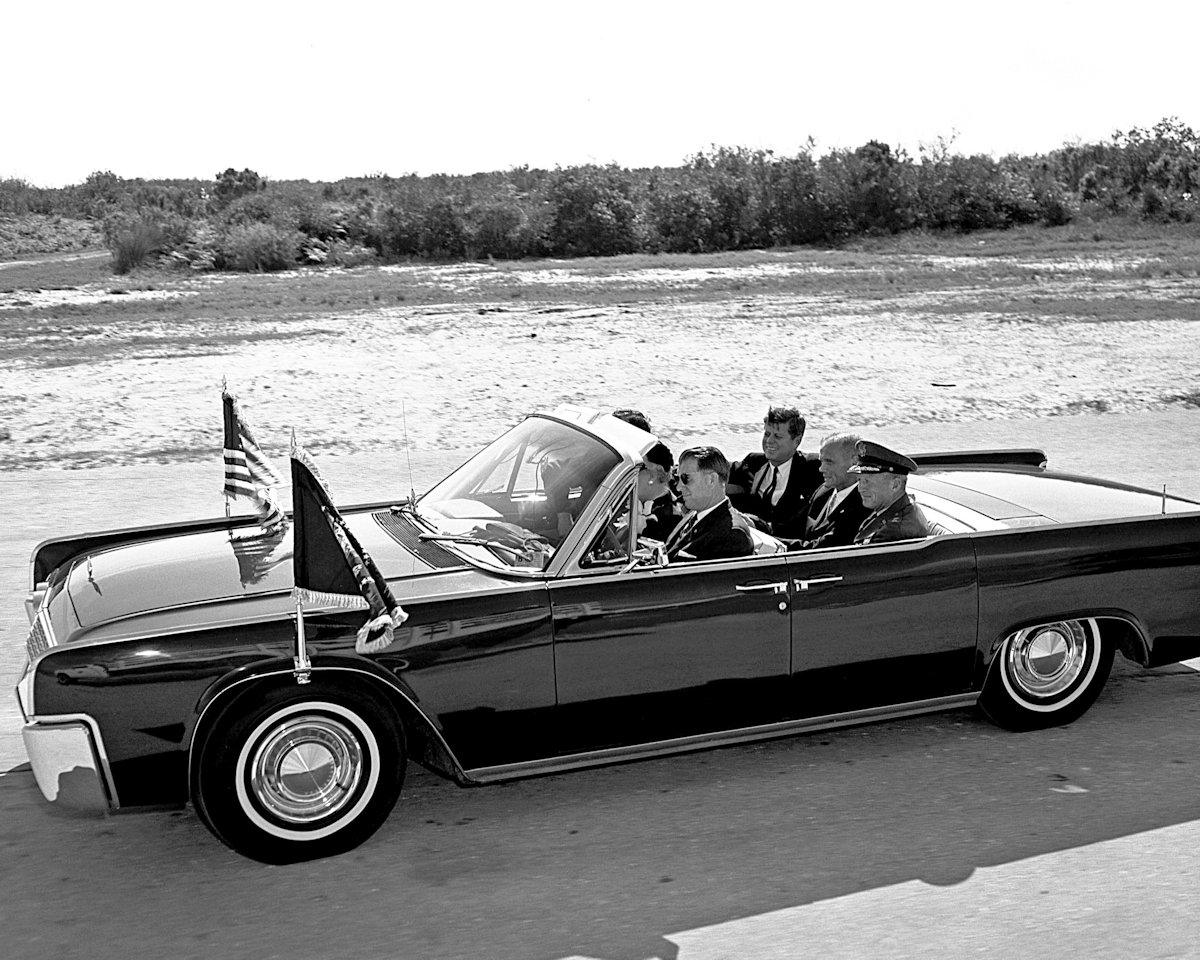
A wider shot of Kennedy’s dark blue presidential limousine (which the Secret Service codenamed X-100), a modified 1961 Lincoln Continental. Gen. Davis was the Department of Defense’s support man for Project MERCURY.
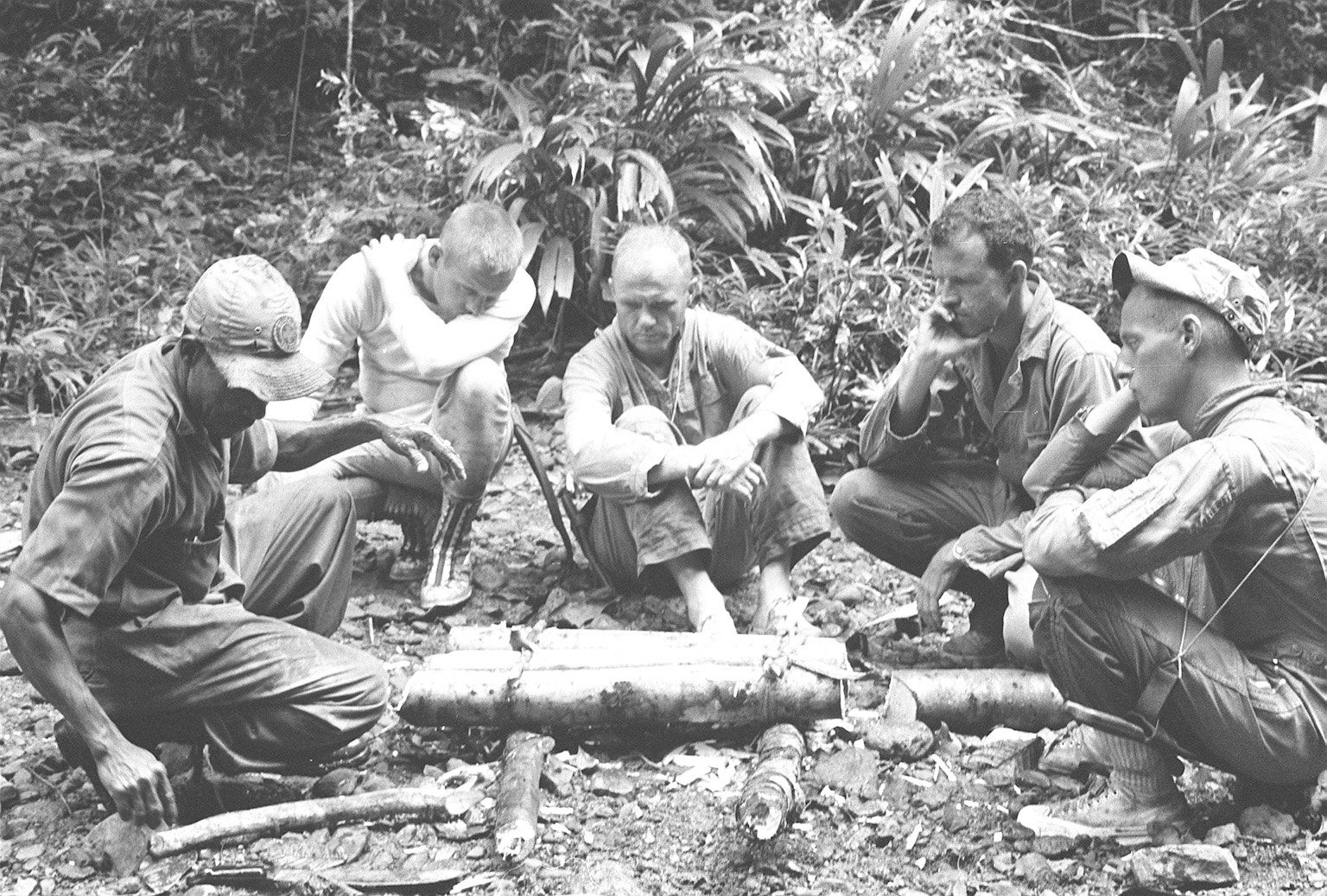
Neil Armstrong, Glenn, L. Gordon Cooper, and Pete Conrad (from left to right) undergo tropical survival training alongside at Albrook Air Force Base in Panama on 3 March 1963.
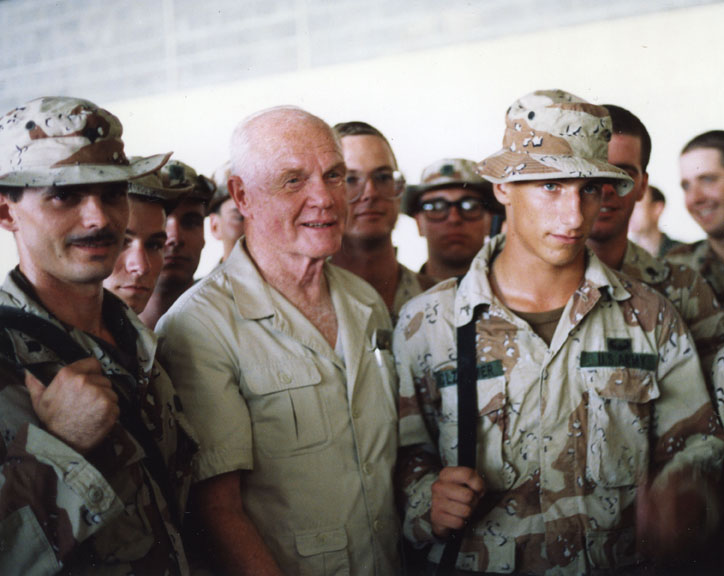
U.S. Senator Glenn (Democrat, Ohio) visits with American soldiers in Kuwait after Operation DESERT STORM in March 1991.
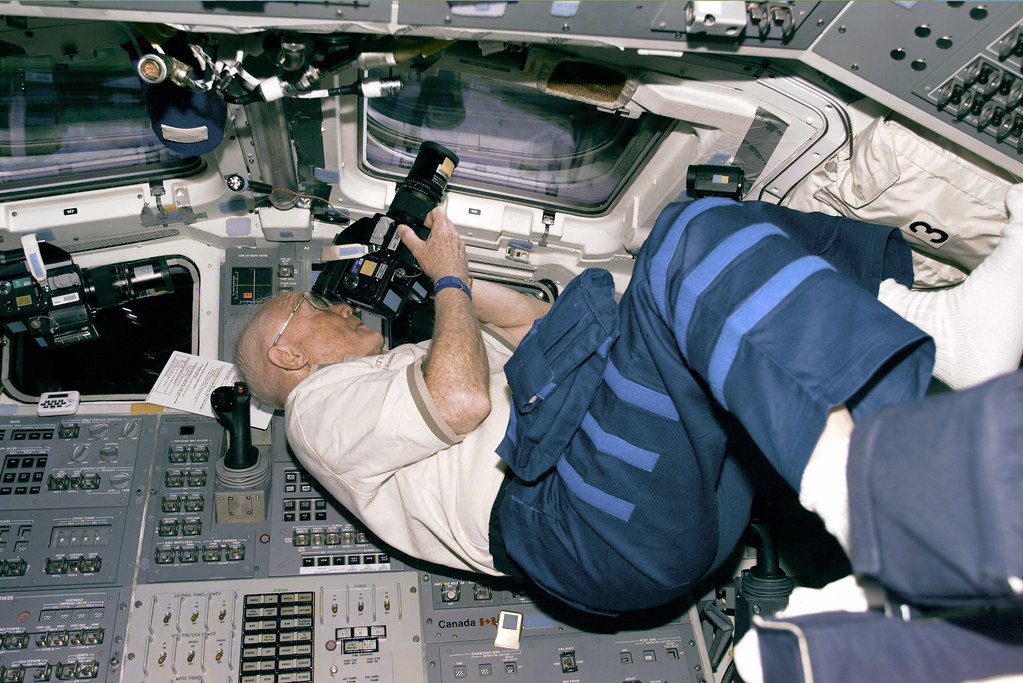
STS-95 Payload Specialist John Glenn taking photos from the Discovery‘s aft flight deck windows on 30 October 1998. The 77-year-old Glenn set the record for the oldest man in space.
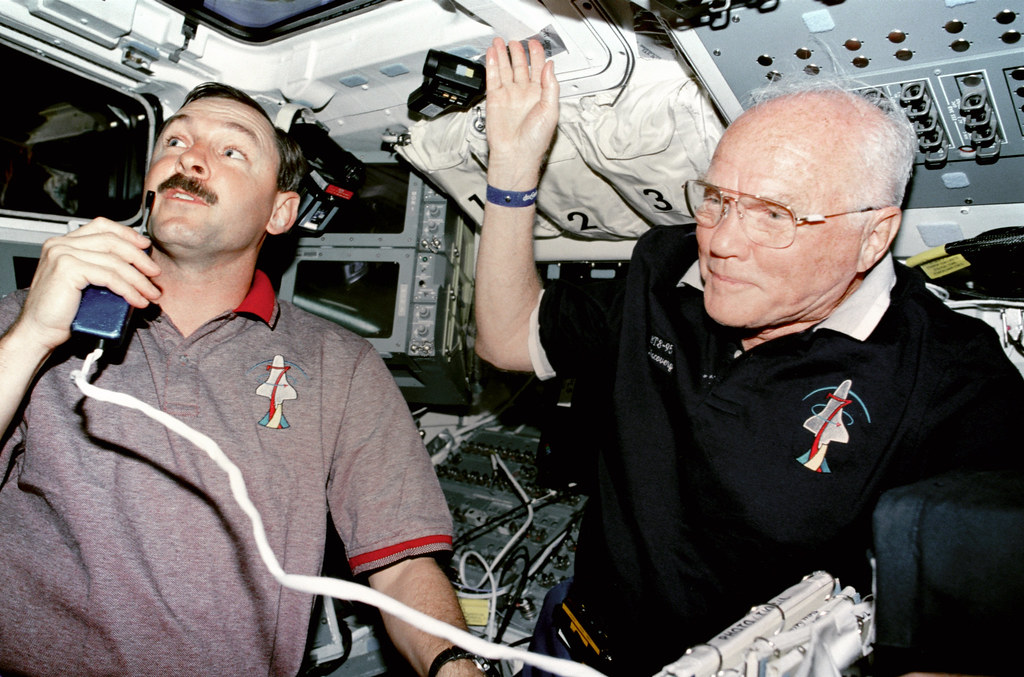
STS-95 mission Commander Curtis Brown and Glenn during a press conference on 29 October 1998. Col. Brown (USAF, ret.) flew A-10s and F-16s before his six space shuttle missions.
